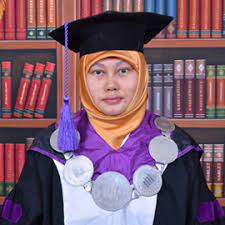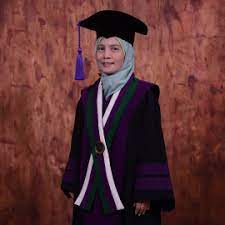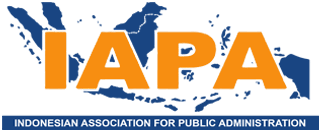MODEL PEMBERDAYAAN MASYARAKAT TANI BERBASIS KEMITRAAN GENDER DAN KOMODITI UNGGULAN LOKAL DALAM RANGKA PENGENTASAN KEMISKINAN DI PEDESAAN
DOI:
https://doi.org/10.30997/jsh.v1i1.75Abstract
Agricultural sector in a wide perspective (food crop, animal husbandry, mixed farming) is very potential in helping Indonesian people cope with the effects of global and national economic crisis. The optimization of agricultural potential can lead people in rural areas to food sovereignty and at least reduce hunger. The concept of gender and family empowerment is seen as an entry point to poverty eradication a family is the smallest institution in a society and partnership cooperation between male and female in a family is a foundation for the achievement of family prosperity. Public prosperity is achieved when family prosperity is. Therefore, this study was done in order to assess the characteristics of farmer families seen from various aspects. Results showed that most proportion of husband-wife groups were middle-aged and had highest educational level of elementary school. More than half of husband respondents (61.3% in Tasikmalaya Regency and 60.0% in Ciamis Regency) worked as farmers. More than half of wife respondents (61.3% in Tasikmalaya Regency and 60.0% in Ciamis Regency) were housewives. The highest percentage of respondents (64.0%) had 1-4 family members with total income of less than Rp500,000 per month and an average income of Rp766,421. The highest proportion of respondents spent Rp 183,289 (in Tasikmalaya Regency) and Rp157,857 (in Ciamis Regency) per month for household appliance repair. The highest percentage of respondents (29.3%) stated that individual as source of loan. The most common problem faced by respondents in Tasikmalaya and Ciamis Regencies was financial problem and the least common was food availability. Respondents in Tasikmalaya Regency faced family problems more often than those in Ciamis Regency. The strategy most commonly applied by families in both regencies to save expenses was buying cheaper food. There was a positive relationship between wife age (r = 0.204; p = 0.012), husband age (r = 0.240; p = 0.003), and wife education (r = 0.212; p = 0.009) and family problems. A positive relation was also found between husband education and coping strategy applied (r = 0.163; p =0.046). Number of family member had a positive correlation with amount of debt (r = 0.243; p = 0.003) indicating the more members a family had, the more debt the respondent had.
References
Pembangunan Manusia Indonesia Tahun
: Ekonomi dari Demokrasi Membiayai Pembangunan Manusia Indonesia.
Chamber, R. 1995. Pembangunan Desa : MUlai dari Belakang. LP3ES. Jakarta
Gibson, R. 1993. Nutritional Assesment A Laboratory Manual. University of Guelph. Oxford University, New York.
Guhardja, et al. 1992. Diktat Manajemen Sumberdaya Keluarga. Jurusan Gizi Masyarakat dan Sumberdaya Keluarga, Fakultas Pertanian, IPB. Bogor.
Hawadi,R.A. 2001. Psikologi Perkembangan Anak. Mengenal Sifat, Bakat dan Kemampuan Anak. Gramedia Widiasarana Indonesia. Jakarta.
Hikmat, H. 2004. Strategi Pemberdayaan Masyarakat. HUmaniora Utama. Bandung
Hurlock, E.B. 1997. Perkembangan Anak.
Jilid 1. Gramedia, Jakarta
Ismael, O.J. 2005. Pengembangan Forum Kesejahteraan Sosial Berbasis Komunitas. Tesis yang Tidak Dipublikasikan. IPB, Bogor.
Kantor Menteri Negara Koordinator KEsejahteraan Rakyat. 2004. Strategi Kemiskinan Nasional. TKP3KPK. Jakarta.
Myers, R. 1992. The Twelve Who Survive.
Strengthening Programmes of Early
Chilhood Development in the Third World. Routidge in Co-operation with UNESCA for the Consultative Group on Early Chilhood Care and Development, London.
Pranarka, W., Vidhyandika. 1996.
Pemberdayaan : Konsep, Kebijakan dan Implementasi. Center for Strategic and International Studies. Jakarta.
Pudjiadi, S. 2001. Ilmu Gizi Klinis pada
Anak. Edisi keempat. Fakultas
Kedokteran, Universitas Indonesia, Jakarta.
Rahardjo, D. 1995. Program-program Aksi Untuk Mengatasi Kemiskinan dan Kesejahteraan pada PJ II. Aditya Media. Yogyakarta.
Saefudin, dkk. 2003. Menuju MAsyarakat Mandiri. Pengembangan Model Sistem Keterjaminan Sosial. Gramedia Pustaka Utama. Jakarta.
Slamet, M. 2000. Paradigma baru Penyuluhan Pertanian di Era Otonomi Daerah. Tasikmalaya. Jawa BArat : Seminar PERHIPTANI.
Slamet, M. 2000. Pemberdayaan Sumberdaya Manusia Menuju Terwujudnya Masyarakat Madani (Proseding Seminar Nasional. Kerjasama PAPPI dengan Program Studi Penyuluhan Pembangunan. PPS-IPB Bogor. Pustaka Wirausaha Muda.
Satoto. 1997. Fitrah dan Tumbuh-Kembang Anak. Pidato Pengukuhan Jabatan Guru Besar Tetap dalam Ilmu Gizi pada Fakultas Kedokteran Universitas Diponegoro. Semarang.
Satoto. 1990. Pertumbuhan dan
Perkembangan Anak. Pengamatan 0-
bulan di Kecamatan Mlonggo, Kabupaten Jepara, Jawa Tengah. Disertasi untuk Memperoleh Gelar Doktor dalam Ilmu Kesehatan, UNDIP, Semarang.
Soemarjan, S. 1998. Dampak Berbagai Krisis
Rumah Tangga. LIPI. Jakarta.
Sumidiningrat, G. 1999. Pemberdayaan Masyarakat dan JPS. Gramedia Pustaka Utama. Jakarata.
Trikoesoemaningtyas, Puspitawati, H., Herawati, T. 2006. Peran Gender Dalam Usaha Tani. Laporan Penelitian Kerjasama Departemen Agronomi dan Hortikultura, ICRAF dan USAID. Bogor,
Vaydanoff. (1988). Economic Distress, Family Copying and Quality of Family Life. Newbury, CA. Sage.
Wijaya, K., Budidarso, S., Rosbetko, J. 2006.
Socio Economic Studies Agroforestry and Sustainable Vegetable Production in Southeast Asian Watershed. Research Report ICRAF-USAID. Bogor.
WHO. 1995. Physical Status : The Use and Interpretation of Antrophomentry. Report of a WHO Expert Committee. WHO Technical Report Series 854. WHO, Geneva.
WHO. 2000. Complementary feeding of young children in developing countries. A review of current scientific knowledge.

















